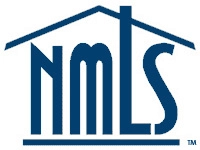HUD Updates Manufactured Home Regulations
The U.S. Department of Housing & Urban Development (HUD) has announced its most extensive update to the Manufactured Home Construction and Safety Standards in more than three decades, including 90 new or updated standards to increase innovation and production of homes with features that are sought-after by consumers, such as open floor plans and accessibility enhancements, open floor plans, and specifications for attics.
The new updates seek to expedite the home production process by cutting red tape and eliminating the need for manufacturers to obtain alternative construction approvals for materials that already meet or exceed HUD standards—helping build more manufactured homes and boost the nation’s housing inventory.
“Manufactured homes are an affordable housing option for Americans across the country,” said HUD Acting Secretary Adrianne Todman. “This update of the HUD Code is long overdue and will help increase production while also ensuring modern designs to suit the needs of families.”
Highlights of the Update
HUD’s Assistant Secretary for Housing Julia Gordon announced the changes in Elkhart, Indiana, the home of the RV and Manufactured Housing Hall of Fame, including:
- Up to four unit manufactured homes: Changes allow single-family manufactured homes to offer up to four dwelling units while ensuring comprehensive fire safety to occupants by adding benchmarks and guidelines that meet Manufactured Housing Construction and Safety standards.
- Open floor plans, truss designs, and specifications for attics: The updated requirements for exterior door separation and structural design enable open floorplans that maintain fire safety, clarify unclear provisions, and enable optimization of truss design. In addition, the final rule includes more clarity regarding structural design requirements for attics.
- Ridge roof designs: Revised definitions and regulatory language allow certain specified roof ridge designs (peak cap and peak flip roof assemblies) without a requirement for specific on-site inspections by a HUD-approved agency, except for certain exclusions.
- Materials that facilitate modern design approaches and improve quality: Updates to reference standards for materials (wood, steel, piping) and products align with other building standards, allow the use of more modern design approaches and installation of alternative materials, and improve the quality and safety of homes for consumers.
- Accessibility improvements: Modifications to standards for accessible showers comply with national disability standards for roll in showers. This eliminates the need for HUD alternative construction approval and reduce cost and burdens for manufacturers and consumers.
- Modern and energy-saving appliances: Updated and newly added standards allow for the use of more modern and energy efficient appliances, including gas-fired tankless water heaters, eliminating the need for HUD alternative construction approvals for use of such appliances.
- Additional process efficiencies that save time and reduce costs: Improved language stipulating prerequisites for the process of obtaining installation licenses increase flexibility for installers; updates to water system piping testing procedures decrease on-site testing time; and utilization of appliance QR codes for manuals and information will reduce paperwork and bookkeeping.
Commemorating 50 Years of Manufactured Home Standards
HUD issued its latest manufactured housing changes as the Department commemorates the 50th anniversary of the passage of the Manufactured Home Construction and Safety Standards Act. Effective as federal law on August 22, 1974, the Act authorized HUD to establish nationally preemptive federal standards for the design and construction of all manufactured homes built in the U.S. The Manufactured Home Construction and Safety Standards (HUD Code), is administered by HUD’s Office of Manufactured Housing Programs and remains the guiding federal standard for ensuring that manufactured housing–the homes of more than 20 million individuals and families–remain safe, durable, and affordable.
In addition to the final rule, HUD’s Office of Manufactured Housing Programs issued an industry-wide Alternative Construction Letter that provides the terms and conditions for manufacturers to gain approval of designs and build multi-unit manufactured homes immediately, rather than waiting six months for the standards contained in the final rule to become effective. The updates announced enact a significant number of recommendations made by the federally mandated Manufactured Housing Consensus Committee.
“The changes to the HUD Code we’ve finalized today will expand the choices among manufactured homes available for the nation’s homebuyers, while increasing the production and availability of innovative manufactured home designs that are safer, modern, and comparable to site-built homes,” added Gordon. “These updates will bring the HUD Code in alignment with today’s construction standards and reduce operational complexity for manufacturers.”
Eric C. Peck September 12, 2024














